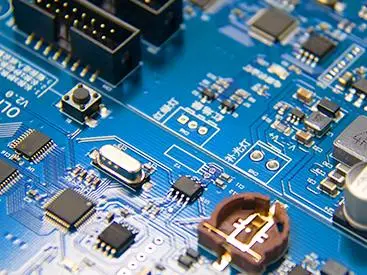
Analysis of the cause of tin bead in PCB chip processing in pcb factory
Tin bead is one of the poor processing phenomena that sometiMES occur during chip processing. For SMT factory, the tin beads that appear in the processing must be solved. An excellent electronIC processing factory should try its best to eliminate all processing defects. To solve the problem, we must first know the cause of the problem. Now the chip processing factory will analyze the cause of the tin bead.
Solder beading is a predicate, which is used to distinguish a kind of tin ball that is unique to the pieces. Solder beads occur when the solder paste slumps or when the pad is pressed out during processing. During reflow, the solder paste is isolated from the main precipitation, aggregated with the excess solder paste from other pads, or emerges from the side of the component body to form large solder beads, or remains under the component. The tin bead elimination operation can be avoided by not removing the tin bead directly as much as possible and paying attention to it during the production process. Now, based on past experience, Jason Ty will explain to you the situations that lead to tin beads on the patch:
1、 Steel mesh
1. The opening of the steel mesh directly according to the size of the pad will also lead to the tin bead phenomenon during the patch processing.
2. If the thickness of the steel mesh is too thick, it may also cause the collapse of the solder paste, which will also produce solder beads.

3. If the pressure of the placement machine is too high during mounting, the solder paste will be easily squeezed onto the solder barrier layer under the element, and the solder paste will melt and run around the element to form solder beads during reflow soldering.
2、 Solder paste
1. Other precautions: If the solder paste has not undergone the temperature recovery treatment, it will splash during the preheating stage, resulting in solder beads.
2. Metal powder size The SMAller the particle size of the metal powder in the solder paste, the larger the overall surface area of the solder paste, resulting in a higher degree of oxidation of the finer powder, thus aggravating the phenomenon of solder beads.
3. Oxidation degree of metal powder The higher the oxidation degree of the metal powder in the solder paste, the greater the bonding resistance of the metal powder during welding, and it is not easy to soak between the solder paste and the bonding pad and SMT chip components, thus reducing the solderability.
4. Too much flux and active flux will lead to local collapse of solder paste, which will produce solder beads. When the flux is not active enough, the oxidation part cannot be completely removed, which will also lead to solder beads in processing.
5. Metal content The general metal content and mass ratio of solder paste used in actual processing are 88%~92%, and the volume ratio is about 50%. Increasing the metal content can make the arrangement of metal powder more compact, so that it is easier to combine when melting.
The above is about the reason for tin beads on the patch during the patch processing. You can compare them according to your actual situation to see if you have these reasons. If you have them, you can change them to see if they can be solved. PCB manufacturers, PCB designers, and PCBA manufacturers will explain the reasons for the tin beads produced during the processing of pcb patches.
然后
联系
电话热线
13410863085Q Q

微信

- 邮箱











